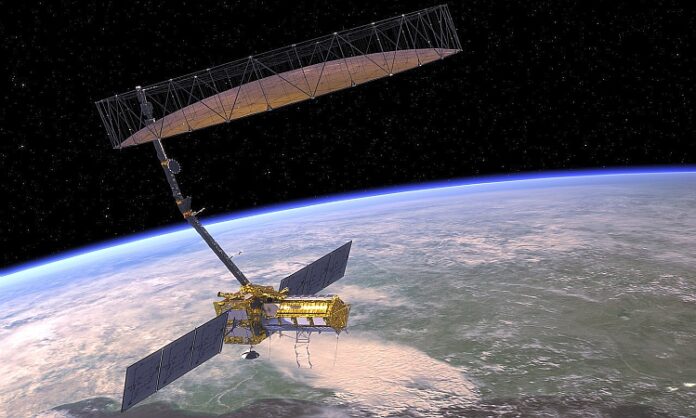New Delhi: Union minister of state (independent charge) earth sciences & space Jitendra Singh on Thursday informed the Rajya Sabha that United State’s National Aeronautics and Space Administration (NASA) and the Indian Space Research Organization (ISRO) have jointly made an earth science satellite named, NISAR (NASA-ISRO Synthetic Aperture Radar), to measure earth’s changing ecosystems, dynamic surfaces, and ice masses providing information about biomass, natural hazards, sea level rise, and groundwater, and will support a host of other applications.
Likely to be launched from Satish Dhawan Space Centre, Sriharikota, next year, the satellite will orbit the earth in a sun synchronous orbit of 747 km with an inclination of 98.4 degree for a 12-day repeat cycle.
Also Read: Agnikul Cosmos sets up India’s 1st pvt space vehicle launchpad
In a written reply to a question in the Rajya Sabha, Singh said, the mission objectives of the satellite are-design, develop and launch dual frequency (L and S band) radar imaging satellite and to explore newer applications areas using L & S band microwave data especially in surface deformation studies, terrestrial biomass structure, natural resource mapping and monitoring and studies related to dynamics of ice-sheets, glaciers, forests, oil slick etc.
The minister said, the satellite is configured with I-3K bus and the instrument identified for SAR is based on the innovative sweep SAR technique configured in both L and S band in polarimetric configuration for wide swath and high resolution.
Also Read: ISRO’s PSLV successfully places EOS, 8 nano satellites in space
While NASA is delivering the L-Band SAR payload, high precision GPS and 12m unfurlable antenna, ISRO is delivering S-band SAR payload, spacecraft bus and facilitating launch. The total expenditure incurred on realization of NISAR satellite by ISRO as on February, 2023 is ₹469.40 crore, excluding launch cost.
As per the mission outline, NISAR’s data can help people worldwide better manage natural resources and hazards, as well as providing information for scientists to better understand the effects and pace of climate change. It will also add to our understanding of our planet’s hard outer layer, called its crust.




